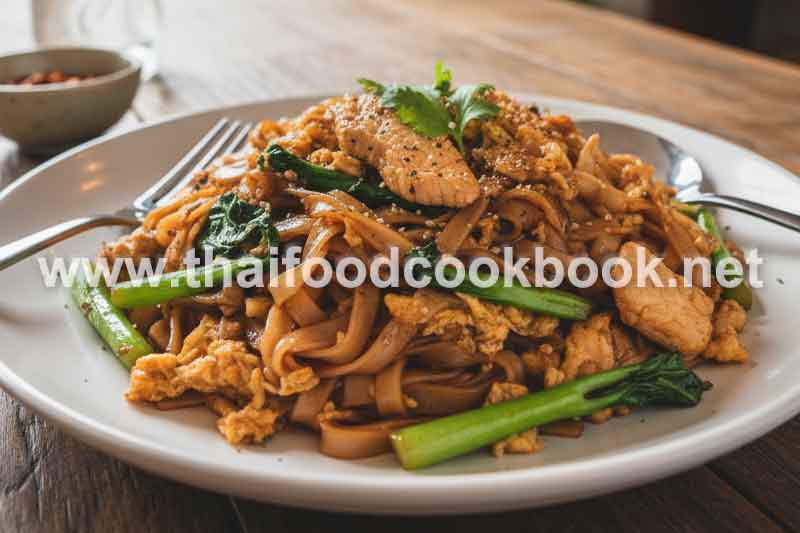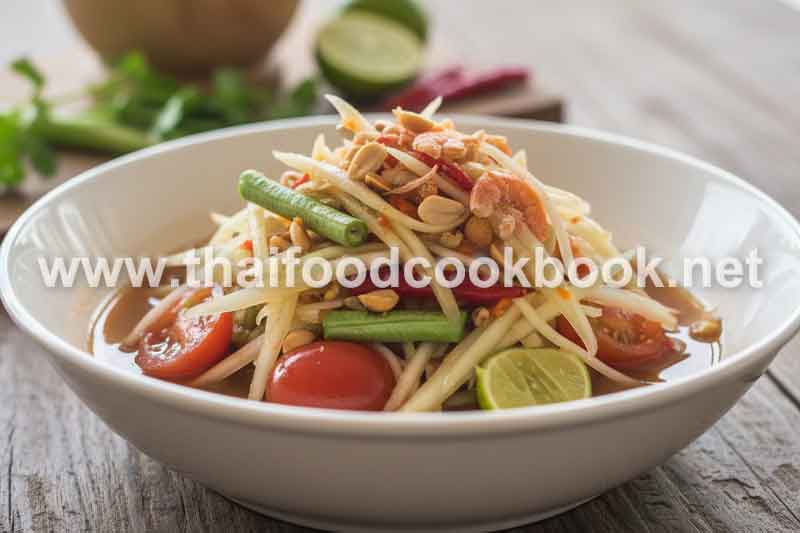Tom Yum Goong – The Legendary Thai Soup: A Deep Dive into Thailand’s Iconic Hot-and-Sour Shrimp Broth
In households and street stalls across Thailand, many people struggle to replicate that perfect balance of spicy, sour, salty, and herbal flavors in a bowl of Tom Yum Goong. Some attempts turn out bland, others overly spicy, and many lack the aromatic lift that makes the Tom Yum Goong experience legendary. Our mission here is to guide you—step by step—to make authentic Thai Tom Yum Goong that sings with flavor, and to equip you with troubleshooting tips and best practices so your version can compete with restaurant standards. We also provide insight into why this dish has become a global icon, offering you not just a recipe but a full understanding of the ingredients, technique, and cultural significance. To further your culinary journey, check out this comprehensive Thai one-dish menu reference: Thai one-dish menus.
Discovering the Essence of Tom Yum Goong – The Legendary Thai Soup
Tom Yum Goong is more than just a soup; it is a celebration of Thailand’s culinary heritage. Its unique blend of spicy, sour, salty, and aromatic flavors has made it a favorite around the world. Understanding the key components—from fresh shrimp and lemongrass to galangal, kaffir lime leaves, and Thai chilies—helps anyone recreate the perfect balance of taste and aroma at home. This section explores the essential elements and techniques that make Tom Yum Goong truly legendary, guiding you through each step so you can experience the authentic flavors and vibrant character of this iconic Thai dish.
- Using fresh, high-quality shrimp for the best texture and flavor.
- Incorporating aromatic herbs like lemongrass, galangal, and kaffir lime leaves.
- Balancing sour, salty, and spicy notes to achieve the signature taste.
- Understanding the role of chili paste and fresh lime juice in enhancing the broth.
- Techniques for cooking shrimp and mushrooms to preserve their natural flavors.
By focusing on these core elements, you can master the authentic Tom Yum Goong recipe and enjoy a bowl of soup that truly represents Thailand’s rich culinary traditions.
History & Significance: The Origins of Tom Yum Goong
The Cultural Roots of Thailand’s Spicy Shrimp Soup
Tom Yum Goong traces its origins to central Thailand, where communities by rivers favored freshwater shrimp and herbal medicines. Over generations, cooks blended lemongrass, galangal, kaffir lime leaves, chilies, and shrimp to craft a soup that stimulates the palate and comforts the soul. In 2024, Tomyum Kung (Tom Yum Goong) was inscribed on UNESCO’s Representative List of the Intangible Cultural Heritage of Humanity. :contentReference[oaicite:0]{index=0}
Why It Became a Legendary Thai Soup
It is not just flavor that elevated this dish—its balance of tastes, its herbal depth, and its ability to be served across classes and occasions made Tom Yum Goong synonymous with Thai culinary identity. CNN has ranked it among top soups globally, and its presence in Thai restaurants worldwide solidifies its legendary status. :contentReference[oaicite:1]{index=1}
Authentic Tom Yum Goong Recipe: Ingredients & Step-by-Step Instructions
Key Ingredients for Authentic Tom Yum Goong
Below is a carefully selected ingredient list to make a truly authentic Tom Yum Goong recipe. Quantities are for about 4 servings.
- 300–400 g fresh shrimp (with heads and shells intact if possible)
- 3 cups water + optionally 1 cup unsalted chicken stock or shrimp stock
- 2 stalks lemongrass (trimmed and smashed)
- 1 inch fresh galangal, thinly sliced
- 5–7 kaffir (makrut) lime leaves, torn
- 3–5 Thai bird’s eye chilies (adjust to preference)
- 3 small shallots (smashed)
- 4–5 oyster mushrooms (or straw mushrooms)
- 1–2 tbsp Thai chili paste (nam prik pao) (optional, for depth)
- 2–3 tbsp fish sauce (to taste)
- 2 tbsp palm sugar (or regular sugar)
- 3 tbsp fresh lime juice (added at end, to taste)
- Fresh cilantro leaves, for garnish
Detailed Cooking Steps for How to Make Tom Yum Goong at Home
- Prepare shrimp and stock: Peel shrimp, reserving shells and heads. Use them to simmer gently with water for 8–10 minutes to create a shrimp stock base; then strain the shells out.
- Infuse aromatics: Add lemongrass, galangal, torn kaffir lime leaves, smashed shallots, and chilies into the simmering stock. Let it boil gently for 3–5 minutes until fragrant.
- Add mushrooms: Drop the mushrooms into the aromatic broth and simmer for 2–3 minutes until slightly softened.
- Season the soup: Stir in fish sauce, palm sugar, and nam prik pao (if using). Adjust saltiness and sweetness gradually.
- Cook shrimp: Add raw shrimp into the simmering soup and cook just 30 seconds to a minute—don’t overcook; they should turn pink and firm.
- Finish with lime juice: Remove from heat and stir in fresh lime juice to preserve its brightness.
- Garnish and serve: Ladle into bowls, garnish with cilantro leaves, and serve immediately with steamed jasmine rice or as a soup course.
Following these steps ensures your version of Tom Yum Goong captures the aromatic sharpness, herbal balance, and vivid flavors that define a world-class bowl of Thai shrimp soup.
Flavor Enhancements, Variations & Serving Tips
Adjusting Heat and Tang: Best Tom Yum Goong Recipe Tweaks
You can vary spiciness by adjusting the number of bird’s eye chilies or reducing chili paste. If your broth becomes too sour or salty, balance with a little sugar or extra stock. Want a creamier version? Use evaporated milk or coconut milk to make Tom Yum Goong nam khon (creamy hot-and-sour soup). :contentReference[oaicite:2]{index=2}
Popular Sub-Variants and Dietary Tweaks
- Clear broth version (nam sai): skip chili paste and milk—to emphasize bright, clean herbal flavors. :contentReference[oaicite:3]{index=3}
- Seafood mix: add squid, fish, or scallops for a tom yum po taek style.
- Vegetarian/Vegan Tom Yum: replace shrimp with tofu or mushrooms, use vegetable stock, and omit fish sauce (use soy sauce or seaweed substitute).
- Reduced-heat version: Use fewer or deseeded chilies for mild spice.
Serving & Presentation Tips
Serve Tom Yum Goong hot, ideally in a wide shallow bowl so the aromatics are closer to the nose. Many people enjoy spoons of soup paired with jasmine rice, or alternate sips of broth and bites of shrimp and mushrooms for balance.
Health Benefits & Common Problems When Making Tom Yum Goong
Health Benefits of Tom Yum Goong Soup
This iconic shrimp soup is more than flavor—it carries health advantages:
- Rich in vitamins and minerals: shrimp provides protein and iodine; herbs bring antioxidants.
- Digestive support: galangal, lemongrass, and kaffir lime leaves are traditionally used to aid digestion.
- Low in calories (especially clear broth version) while providing deep flavor.
Common Pitfalls & Troubleshooting in Tom Yum Goong Preparation
Many home cooks face issues such as:
- Overcooked shrimp → tough, rubbery texture
- Flat tasting broth lacking depth
- Too much sourness or spiciness overwhelming other flavors
- Aromatics not fragrant enough (due to under-infusion)
To fix these: always add shrimp at the end, taste and adjust fish sauce/sugar/lime carefully, simmer aromatics gently but fully, and consider frying shrimp shells first to impart extra umami.
Conclusion: Elevate Your Thai Experience with Perfect Tom Yum Goong
From its cultural roots connected to Thai riverside communities, to its global status as a legendary Thai soup, Tom Yum Goong continues to captivate food lovers everywhere. With the proper ingredients, step-by-step method, and attention to balance, your home kitchen can produce bowls worthy of ranking among the best Tom Yum Goong recipe options out there.
If you apply the troubleshooting tips, adjust variants to your preference, and serve hot, your version can rival street-stall and restaurant quality. May your next bowl of Tom Yum Goong be legendary in your own right—fragrant, bold, balanced, and unforgettable.

